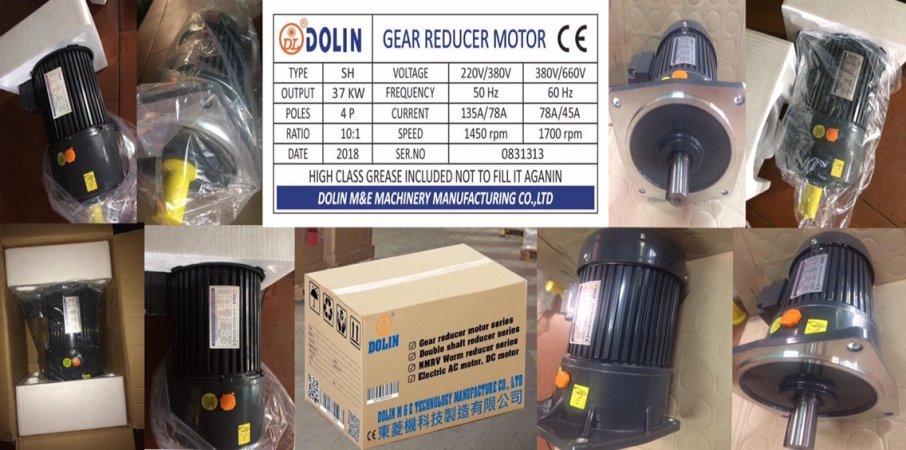- Home
- /
- News
- /
- Industry News
Standard Insulation Class Ratings for Dolin Motors and Gearmotors

Electric motors are categorized by temperature into groups called insulation classes which rate what temperature a motor can safely run at.
Temperature ratings are important to understand because a motor running too hot can cause premature motor failure.
Dolin Standard Motor Insulation Class Rating
pmdc, ac, brushless, universal, motors, fractional hp motors, hp manufacturer, gear motor Dolin standard motor and gearmotor designs are built in accordance to the following UL insulation class ratings:
DC products – class B (130°C) —ask about options for class F
AC products – class H (180°C)
Brushless products – class H (180°C)
Universal products – class A (105°C)
Our standard motors are built with industrial applications in mind and are insulated to perform in these environments. We also have the ability to customize the motor insulation if necessary.
Our engineering team utilizes an advanced software that allows us to calculate what temperature a motor will operate at based on the application’s duty cycle and the ambient temperature of the application.
We use a number of components to allow our motors to safely operate at their rated temperatures. This includes things such as the following: enamel coating on the magnet wire, insulation papers between the wires, sleeves where the leads connect to the magnet wire, and drip and dip varnishes on motor components prior to baking.
Which factors affect the insulation requirements of a motor?
There are many factors that can impact a motor’s performance, but we will focus on three that could cause your motor to overheat if overlooked.
Duty Cycle
Insulation class ratings are based on motors running at continuous duty.
Intermittent duty applications take resting (or off) periods into account, which allows the motor to run higher than its rated load for short periods of time.
Operating Load
When sizing a motor for a specific application, the load of the motor should be taken into consideration. Overloading the motor will make it work harder, therefore causing it to run hotter than designed.
Make sure to spec a motor based on the maximum load it will operate at to prevent premature motor failure caused by overheating. It is possible to run a motor at stall and will not cause the motor to overheat if only hitting it for a short amount of time.
If you are unsure about your operating load, consider purchasing a motor at a larger capacity and using a control to help determine your specs for future purchases.
Ambient Temperature
Ambient temperatures are an important, but often overlooked, factor in choosing the correct motor. The same motor will run hotter in a pizza oven application than it will on a conveyor line in an air conditioned building.
Room temperature is 21°C (70°F)
For a more in-depth checklist for determining why a motor is running above its rated temperature or to prevent overheating in your motor, check out our blog “6 Reasons Your Motor is Overheating.”
What happens when a motor overheats?
A motor overheats when the insulation of the motor exceeds its rated temperature. This overheating and insulation failure can result in wire shorts, loss of electrical connection, and melted brushes (in DC motor types). Motors that have overheated will run less effectively or possibly not at all.
Dolin Standard Motor Insulation Class Rating
pmdc, ac, brushless, universal, motors, fractional hp motors, hp manufacturer, gear motor Dolin standard motor and gearmotor designs are built in accordance to the following UL insulation class ratings:
DC products – class B (130°C) —ask about options for class F
AC products – class H (180°C)
Brushless products – class H (180°C)
Universal products – class A (105°C)
Our standard motors are built with industrial applications in mind and are insulated to perform in these environments. We also have the ability to customize the motor insulation if necessary.
Our engineering team utilizes an advanced software that allows us to calculate what temperature a motor will operate at based on the application’s duty cycle and the ambient temperature of the application.
We use a number of components to allow our motors to safely operate at their rated temperatures. This includes things such as the following: enamel coating on the magnet wire, insulation papers between the wires, sleeves where the leads connect to the magnet wire, and drip and dip varnishes on motor components prior to baking.
Which factors affect the insulation requirements of a motor?
There are many factors that can impact a motor’s performance, but we will focus on three that could cause your motor to overheat if overlooked.
Duty Cycle
Insulation class ratings are based on motors running at continuous duty.
Intermittent duty applications take resting (or off) periods into account, which allows the motor to run higher than its rated load for short periods of time.
Operating Load
When sizing a motor for a specific application, the load of the motor should be taken into consideration. Overloading the motor will make it work harder, therefore causing it to run hotter than designed.
Make sure to spec a motor based on the maximum load it will operate at to prevent premature motor failure caused by overheating. It is possible to run a motor at stall and will not cause the motor to overheat if only hitting it for a short amount of time.
If you are unsure about your operating load, consider purchasing a motor at a larger capacity and using a control to help determine your specs for future purchases.
Ambient Temperature
Ambient temperatures are an important, but often overlooked, factor in choosing the correct motor. The same motor will run hotter in a pizza oven application than it will on a conveyor line in an air conditioned building.
Room temperature is 21°C (70°F)
For a more in-depth checklist for determining why a motor is running above its rated temperature or to prevent overheating in your motor, check out our blog “6 Reasons Your Motor is Overheating.”
What happens when a motor overheats?
A motor overheats when the insulation of the motor exceeds its rated temperature. This overheating and insulation failure can result in wire shorts, loss of electrical connection, and melted brushes (in DC motor types). Motors that have overheated will run less effectively or possibly not at all.
Key: Vertical 3 Phase ac induction motors, electric motor, Vertical Inverter Duty motor, DC Brake motor Oil Pressure Motor, helical gear motor, AC mini Induction DC gear motor, Gear reducer motor series, NMRV NRV worm reducer series, Worm reducer series, Horizontal Inverter duty, worm gear series, ac motor, vertical gearmotor, helical horizontal gearmotor, gear reduce motor, bevel gearmotor, cyclo gear motor, NMRV gear motor, worm reducer
Newer articles
- GENERAL PROPERTIES OF ELECTRIC MOTORS (29/10/2018)
- The basics of a gear motor (29/10/2018)
- 20 Factors to Consider When You Buy an Electric Motor (02/11/2018)
- How to Choose an Electric Motor (02/11/2018)
- 5 Strategies to Build a Global Brand (03/12/2018)
- MOTOR EFFICIENCY LABELING (07/11/2018)
- How to Select a Gearmotors (01/10/2019)
- What is a DC Motor? (03/06/2019)
- INSTRUCTIONS FOR GEAR REDUCER MOTOR (01/12/2018)
- What are Brushless DC Motors (31/05/2019)
Older articles
- Basic Structure Of Gear Motor Reducer (07/07/2018)
- What are characteristics of planetary gearmotors? (08/08/2018)
- Working Principle of DC Motor (25/10/2018)
- DC Electric Motors (25/10/2018)
- Working Principle of AC Motor (25/10/2018)
- DC Motor Calculations (21/10/2018)
- Top 9 tips for working with gearmotors (18/10/2018)
- What is worm reduction NMRV/NRV gearbox (16/10/2018)
- How motors work and how to choose the right motor (12/10/2018)
- Energy-Efficient Motors (13/10/2018)





Join